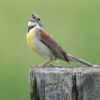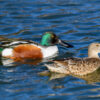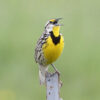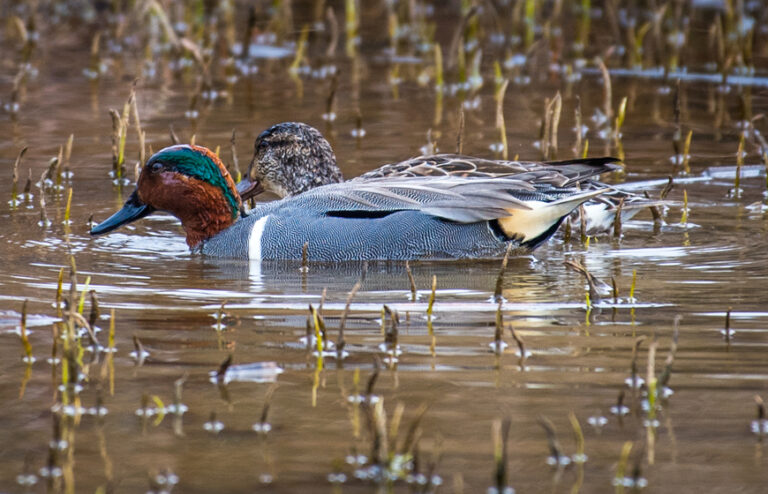
Green-winged Teal, Anas crecca
Bill Rowe
You’re watching a wetland, trying to see the ducks hidden in the grass, when an eagle swoops over the area and flushes them all up, the bigger ones along with a dense flock of little Green-winged Teal, tied for “smallest American duck,” that rise and zip around together like shorebirds. The males, with their green-banded chestnut heads, are more distinctive than the plain brown females, but the sexes do share the same wing pattern in flight—true of most ducks. Green-wings are common to abundant in the Midwest on their spring migration, which takes most of them beyond the “prairie pothole” wetlands where many of our waterfowl breed and on to the vast forested regions of Canada and Alaska. Coming back south in the fall, they are favorites of hunters, cited as the second-most numerous duck taken after the Mallard. Their winter range is roughly the southern and western U.S. and Mexico, with Missouri lying somewhere along the northern edge of it; in general, southern Missouri has a lot more wintering Green-wings than northern, but the actual numbers depend on the local climate and how frozen or open the water is. World-wide, there are two main forms of this bird, one North American and one Eurasian, almost the same in appearance but not quite (see below). Whether to classify them as subspecies or as two different species is a close call, and right now there is disagreement: Old World authorities call them separate species (our bird becoming Anas carolinensis), while the American Ornithological Society has not yet made that leap and treats them both as forms of one species, Anas crecca.
IDENTIFICATION: The male is really unlike anything else, but at a distance or in poor light, when his head just looks dark, his gray sides with a vertical white mark at the shoulder will usually do the trick. His mate, plain though she is, will usually show a small whitish patch or streak below her tail in a side view; this doesn’t appear in female Blue-winged Teal. (See banner photo for both.) In flight, both sexes are generally gray-brown above with light lines bordering their partly green speculum (the rear inner wing), a pattern somewhat like a tiny Mallard. The male Eurasian form, occasionally seen in North America but not yet in Missouri, substitutes a horizontal white streak along the wing for the vertical white shoulder mark.
ST. LOUIS STATUS: Very common as a migrant, typically March-April and again late August to November, found mostly in grassy, marshy areas with shallow water but sometimes out on larger lakes. In winter, variable but often around in small numbers and occasionally into the hundreds.
Learn more and listen to the calls of Green-winged Teals here.
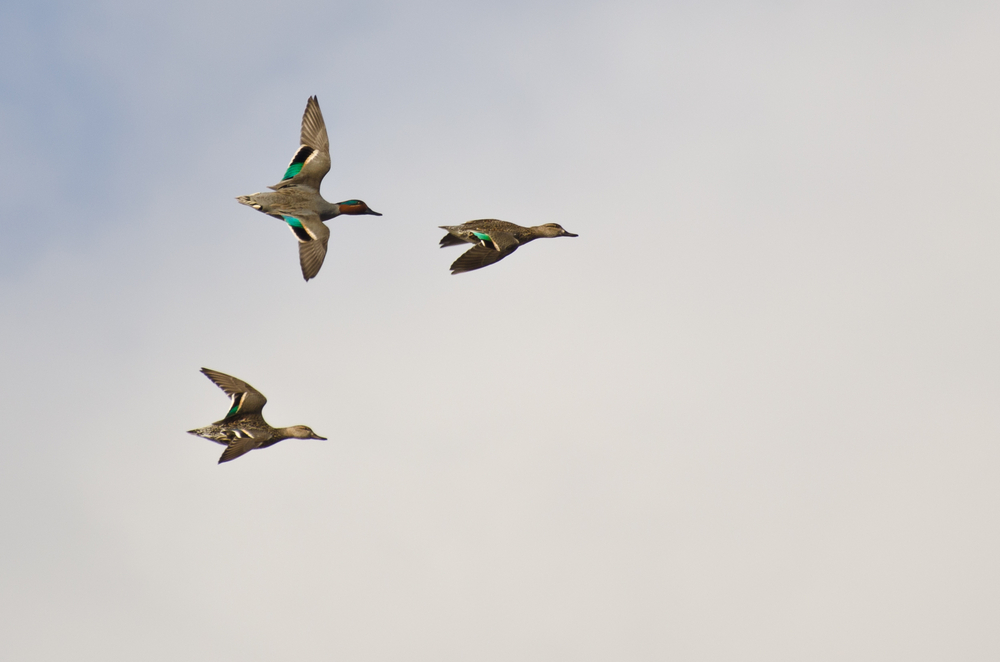
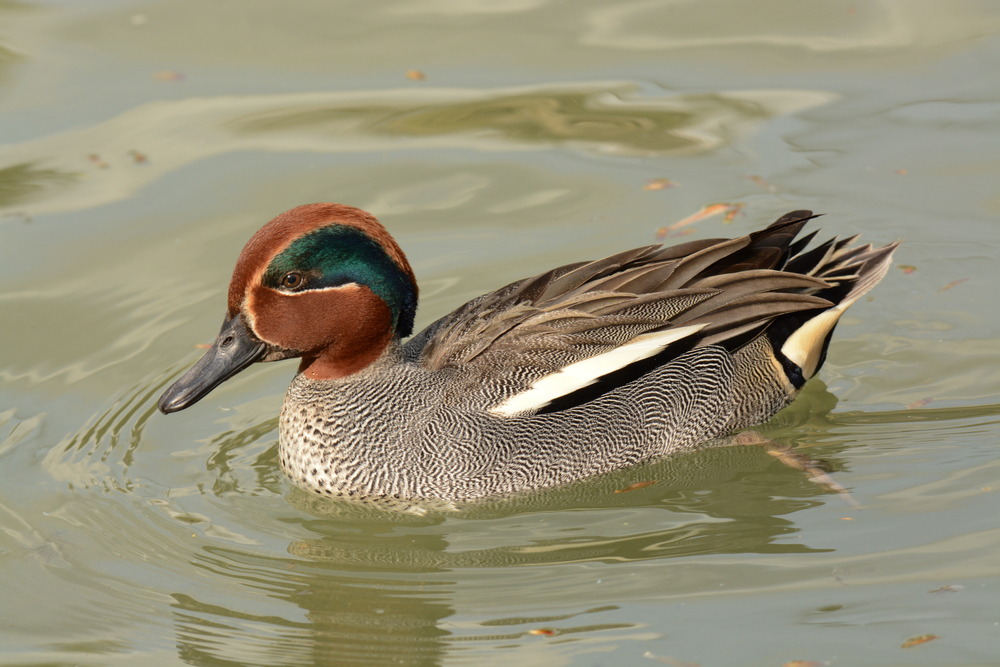
Male and two females in flight
Eurasian form, male


